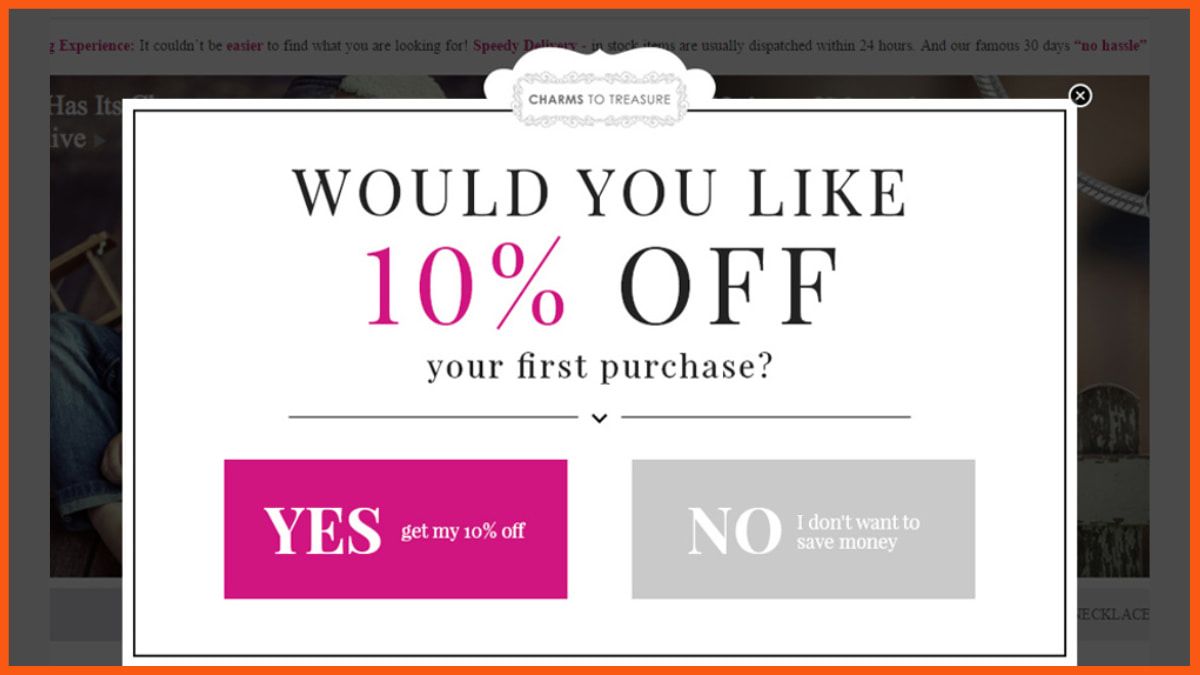In today’s digital landscape, websites are crucial in engaging and converting visitors into loyal customers. One effective strategy for capturing user attention and driving conversions is using website pop-up tools like TryTada. Pop-ups are attention-grabbing web page elements designed to deliver specific messages, encourage user interactions, or capture leads.
This article explores various examples of website pop-ups, from exit intent pop-ups to welcome mats, that can inspire businesses to enhance their online presence and improve conversion rates.
Table of Contents
Inspiring Website Pop-Up Examples
Here are a few inspiring websites pop-up example
1. Exit-Intent Pop-Ups: Convincing Visitors to Stay
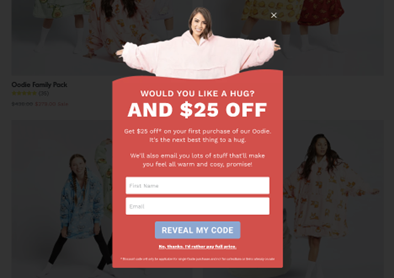
Exit-intent pop-ups are triggered when a user is about to leave your website. These pop-ups capture the attention of visitors who might be exiting without taking any desired action. By presenting compelling offers, discounts, or valuable content, exit-intent pop-ups can convince users to reconsider their decision and stay on your site.
For example, an e-commerce store can display a pop-up offering a limited-time discount to visitors about to abandon their shopping carts, effectively reducing cart abandonment rates and increasing sales.
2. Welcome Mats: Creating a Memorable First Impression
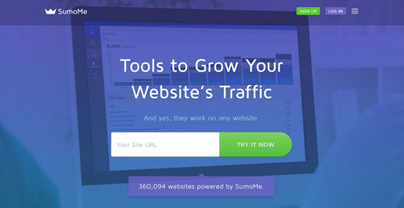
A welcome mat is a full-screen pop-up that appears when a user lands on your website. This type of pop-up allows you to make a strong first impression by delivering a personalized message or showcasing your most valuable content.
Welcome mats often include a call-to-action (CTA) that encourages users to take a specific action, such as signing up for a newsletter or exploring a new product. By leveraging welcome mats, you can effectively introduce your brand, capture user attention, and guide them toward further engagement.
3. Scroll Triggers: Engaging Users as They Explore
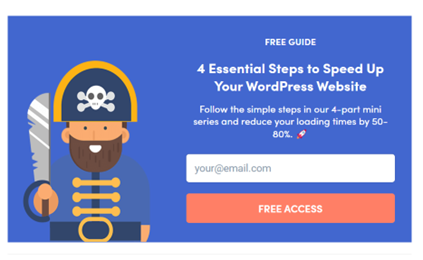
The designers of scroll-triggered pop-ups design them to appear when users scroll down a certain percentage of a web page. These pop-ups provide an opportunity to engage users interested in your content by actively exploring your site.
By delivering targeted messages or offers related to the content they are viewing, scroll-triggered pop-ups can provide additional value and encourage users to take the next step. For example, a blog could use a scroll-triggered pop-up to offer a downloadable ebook related to the article being read, increasing lead generation and content consumption.
4. Timed Pop-Ups: Offering Relevant Promotions
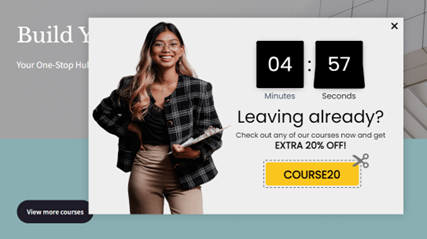
Timed pop-ups appear after a user has spent a specific amount of time on your website. These pop-ups are useful for delivering time-sensitive promotions or highlighting important announcements.
Timed pop-ups can capture user attention when they are most engaged with your site, increasing the chances of conversions. For instance, a company could display a timed pop-up offering a limited-time discount for visitors exploring their product pages for a certain duration.
5. Gamified Pop-Ups: Making Interactions Fun and Rewarding
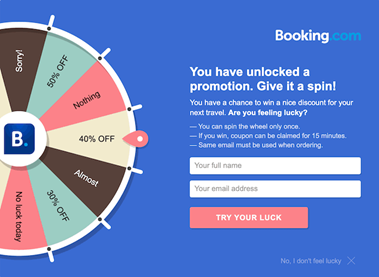
Gamified pop-ups add an element of fun and interactivity to your website. These pop-ups typically include games, quizzes, or interactive features that engage users and provide them with a rewarding experience. By incorporating gamification into your pop-ups, you can create a memorable and enjoyable interaction, increasing user engagement and brand loyalty.
For example, an online retailer could use a gamified pop-up that offers users a chance to spin a wheel and win exclusive discounts or prizes, encouraging them to explore the site further and purchase.
6. Mobile-Specific Pop-Ups: Optimizing for Mobile Users
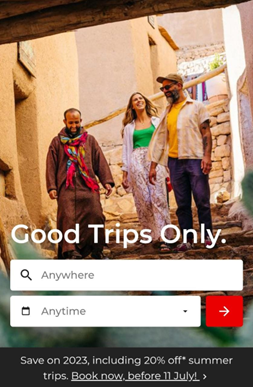
With the increasing prevalence of mobile browsing, optimizing your website pop-ups for mobile devices is essential. Mobile-specific pop-ups are designed with the user experience in mind, ensuring they are visually appealing, easy to interact with and do not disrupt the browsing experience.
You can deliver a seamless experience and maximize conversions by tailoring your pop-ups for mobile users. For instance, a travel agency could use a mobile-specific pop-up that offers users a simplified form to book a trip, making the process quick and hassle-free.
7. Social Proof Pop-Ups: Leveraging User Testimonials
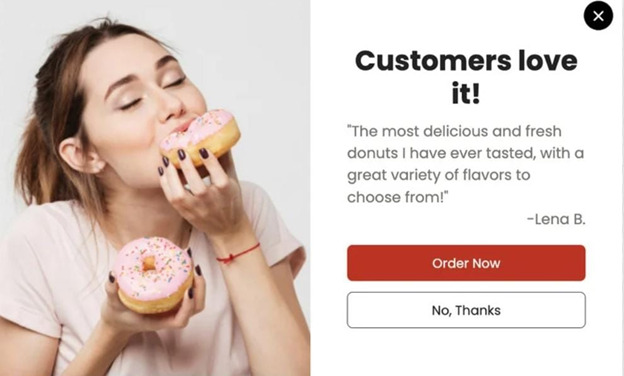
Social proof pop-ups utilize testimonials, reviews, or user-generated content to build trust and credibility. You can alleviate potential customers’ doubts or concerns by showcasing positive feedback from satisfied customers.
Social proof pop-ups can be particularly effective for e-commerce websites or service-based businesses. For example, an donut store could display a pop-up with real-time customer reviews and ratings for a specific product, influencing visitors’ purchasing decisions and boosting sales.
8. Personalized Pop-Ups: Tailoring Offers to Individual Visitors
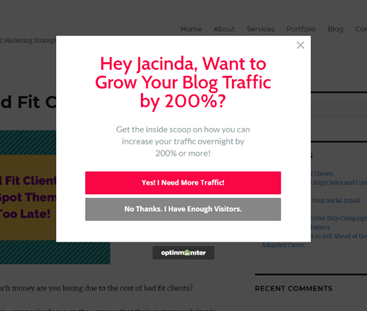
Personalized pop-ups are customized based on user behavior, demographics, or preferences. By leveraging data about your website visitors, you can deliver targeted offers or recommendations relevant to their interests and needs. Personalized pop-ups create a sense of individual attention and increase the likelihood of conversion.
For instance, a software company could use a personalized pop-up that recommends specific features or upgrades based on the user’s previous interactions with the site. It provides a tailored experience that encourages them to upgrade their subscription.
9. Minimalist Pop-Ups: Emphasizing Simplicity and Clarity
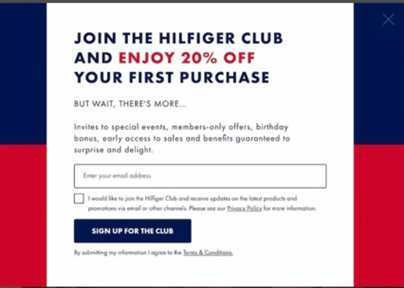
Minimalist pop-ups focus on simplicity and clarity, delivering a concise message with minimal distractions. These pop-ups typically have clean designs, clear CTAs, and minimal text, ensuring the main message stands out.
A minimalist approach allows you to effectively communicate your intended message without overwhelming or distracting your visitors. For example, a consulting agency could use a minimalist pop-up highlighting a single statistic or key benefit, clearly and succinctly conveying the value proposition.
10. Video Pop-Ups: Captivating Audiences with Multimedia
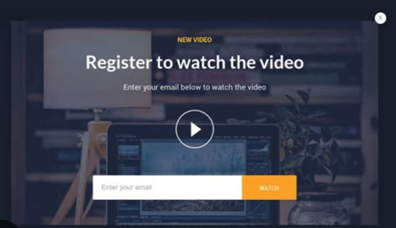
Video pop-ups incorporate video content to engage and captivate your website visitors. Videos are highly engaging and can effectively convey information or evoke emotions. Using video pop-ups, you can tell compelling stories, showcase product demonstrations, or provide educational content in a visually appealing format.
For instance, a fitness website could use a video pop-up demonstrating a workout routine, motivating users to join their fitness program, or purchase exercise equipment.
11. Customizable Pop-Ups: Designing Unique Brand Experiences
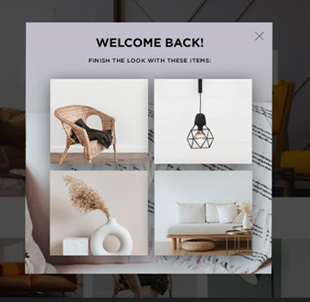
Customizable pop-ups allow you to create unique brand experiences tailored to your specific goals and audience. These pop-ups provide design, layout, and functionality flexibility, allowing you to align them with your brand identity and marketing objectives. By customizing your pop-ups, you can differentiate your brand, create a consistent user experience, and optimize for conversions.
For example, a technology company could use a customizable pop-up that showcases its latest product release with interactive elements, driving excitement and engagement among its target audience.
Best Practices for Designing Effective Pop-Ups
When designing your website pop-ups, following best practices to ensure their effectiveness is essential. Here are some key tips to consider:
1. Know Your Audience
Understanding your target audience’s preferences and needs is the first step in creating relevant and engaging pop-ups. Tailor your message to resonate with their interests and pain points.
2. Set Clear Objectives
Define the purpose of your pop-up. A clear objective will guide your design and copy, whether promoting a discount, encouraging newsletter subscriptions, or announcing an upcoming event.
3. Timing Matters
Displaying a pop-up at the right moment can make all the difference. Avoid showing them immediately upon page load; consider triggers like exit intent, time on the page, or scrolling.
4. Use Eye-Catching Visuals
Visually appealing pop-ups with high-quality images or graphics are more likely to capture attention. However, ensure the visuals align with your brand identity.
5. Craft Compelling Copy
Use persuasive and action-oriented language to encourage users to take the desired action. Focus on the value they will gain by interacting with the pop-up.
6. Mobile Responsiveness
With increasing users browsing on mobile devices, ensuring your pop-ups are fully responsive and work seamlessly on all screen sizes is vital.
7. A/B Testing
Experiment with different variations of your pop-ups to identify which ones perform best. A/B testing helps optimize design, copy, and timing for maximum effectiveness.
8. Offer Easy Exit Options
Make it effortless for users to dismiss or minimize the pop-up if they’re uninterested. Clear and easily accessible close buttons or exit links improve the user experience.
9. Limit Frequency
Avoid bombarding visitors with multiple pop-ups within a short period. Set frequency caps to ensure they do not become intrusive or hinder the browsing experience.
10. Monitor Performance
Regularly analyze the performance of your pop-ups. Track metrics like conversion rates, click-through rates, and bounce rates to identify areas for improvement.
Analyzing Pop-Up Performance: Metrics to Track
To measure the effectiveness of your website pop-ups, it’s important to track relevant metrics. Here are some key performance indicators (KPIs) to consider:
- Conversion rate: The percentage of visitors who complete the desired action prompted by the pop-up.
- Bounce rate: The percentage of visitors who leave your site after interacting with the pop-up.
- Click-through rate (CTR): The percentage of users who click on the CTA within the pop-up.
- Engagement time: The duration of time users spend interacting with the pop-up.
- Exit rate: The percentage of users who leave your site immediately after interacting with the pop-up.
By analyzing these metrics, you can gain insights into the effectiveness of your pop-up strategy and make data-driven optimizations to improve results.
Final Thoughts
Website pop-ups offer a versatile and effective way to engage visitors, capture leads, and drive conversions. Businesses can implement creative and engaging strategies to optimize their online presence by understanding the different types of pop-ups and their respective benefits. Whether it’s utilizing exit intent pop-ups to retain potential customers or employing personalized pop-ups to tailor the user experience, the examples provided in this article serve as inspiration for enhancing website performance and achieving business goals.

